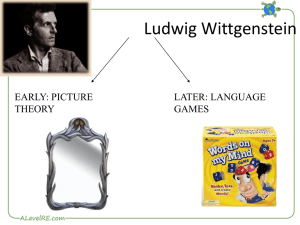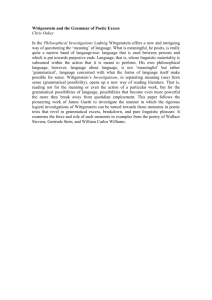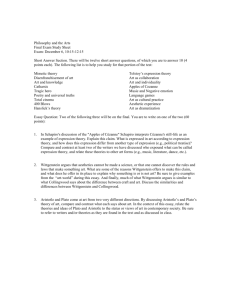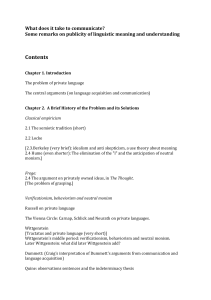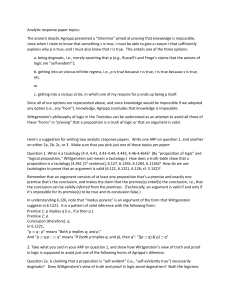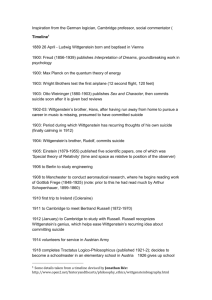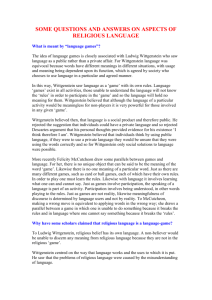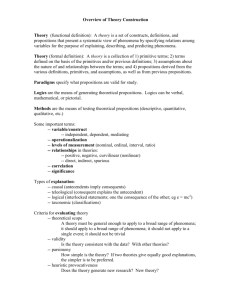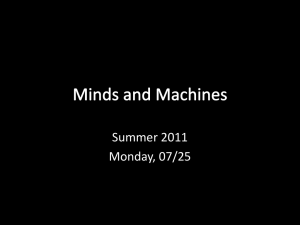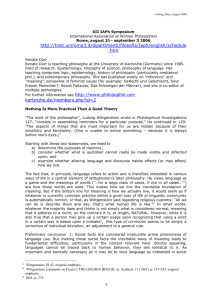Hansen Breitling Philosophy of Language: Wittgenstein 2/24/14 3rd
advertisement
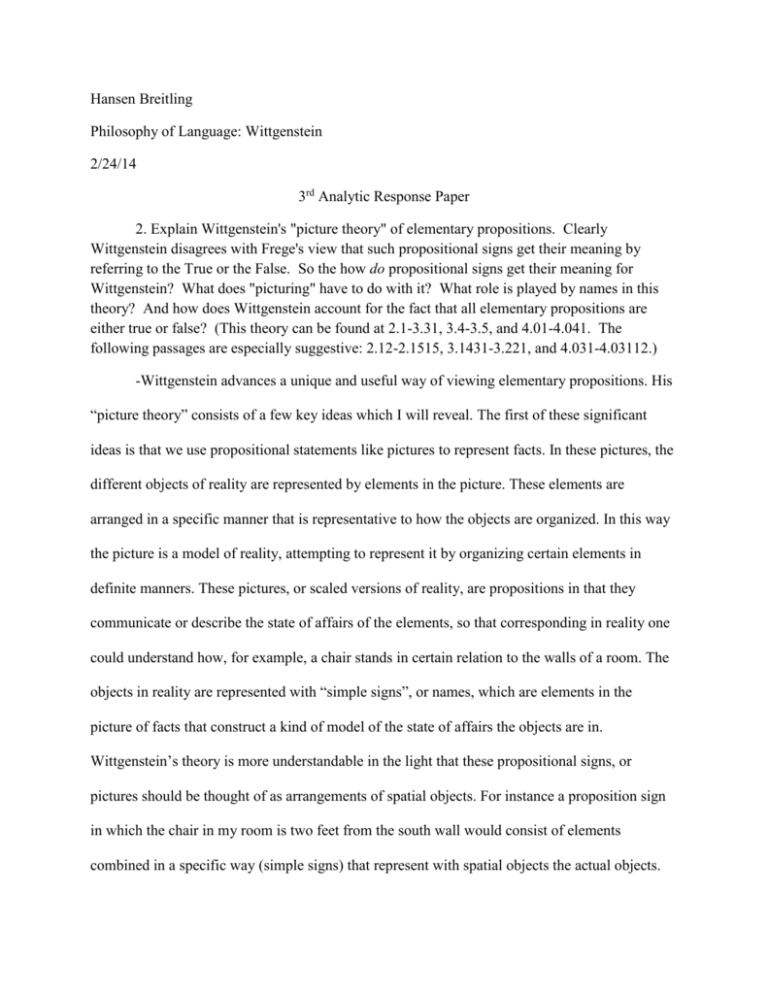
Hansen Breitling Philosophy of Language: Wittgenstein 2/24/14 3rd Analytic Response Paper 2. Explain Wittgenstein's "picture theory" of elementary propositions. Clearly Wittgenstein disagrees with Frege's view that such propositional signs get their meaning by referring to the True or the False. So the how do propositional signs get their meaning for Wittgenstein? What does "picturing" have to do with it? What role is played by names in this theory? And how does Wittgenstein account for the fact that all elementary propositions are either true or false? (This theory can be found at 2.1-3.31, 3.4-3.5, and 4.01-4.041. The following passages are especially suggestive: 2.12-2.1515, 3.1431-3.221, and 4.031-4.03112.) -Wittgenstein advances a unique and useful way of viewing elementary propositions. His “picture theory” consists of a few key ideas which I will reveal. The first of these significant ideas is that we use propositional statements like pictures to represent facts. In these pictures, the different objects of reality are represented by elements in the picture. These elements are arranged in a specific manner that is representative to how the objects are organized. In this way the picture is a model of reality, attempting to represent it by organizing certain elements in definite manners. These pictures, or scaled versions of reality, are propositions in that they communicate or describe the state of affairs of the elements, so that corresponding in reality one could understand how, for example, a chair stands in certain relation to the walls of a room. The objects in reality are represented with “simple signs”, or names, which are elements in the picture of facts that construct a kind of model of the state of affairs the objects are in. Wittgenstein’s theory is more understandable in the light that these propositional signs, or pictures should be thought of as arrangements of spatial objects. For instance a proposition sign in which the chair in my room is two feet from the south wall would consist of elements combined in a specific way (simple signs) that represent with spatial objects the actual objects. These propositional signs earn their meaning (trueness of falsehood) from whether or not they correctly correspond to reality, in that there is an identicalness of the combination of elements and the actual state of affairs. In this way, propositional signs are possible realities which may or may not correspond to reality, but which Wittgenstein makes clear can never by themselves be proven to be true or false, or a priori true. On the subject of sense and a further investigation of names, the next paper will be of the most use as it will be dedicated solely to illuminating these subjects. 4th Analytic Paper 3. Explain Wittgenstein's view of "sense". What sorts of linguistic items have sense? Do names have sense? Why or why not? (One way to write this paper would be to explicate 3.3, on p. 16.) -Wittgenstein’s conception of sense stems from his “picture theory” previously discussed. In his mind, sense can only be applied to propositions (linguistically). If one says that a book is on the table in my room, that proposition has sense because it asserts something which can be made sense of. The sense of propositions stands in contrast to the lack of sense that names possess. This is not to say that names are nonsensical, but that the adjective “sense” cannot even be applied to names just as one cannot call a sound purple. Names represent objects in propositions, they point to the actual objects in the state of affairs. These signs (another word for names) can be spoke of, but Wittgenstein explicitly states that a name alone (or a set of names) cannot be a proponent of anything and instead just say what things are. On the flip side, propositions do not say what things are but instead how they are (how they are arranged, composed, etc.). It is inherent then in names that they do not have sense. An example of this is to think of a table. Does a table alone make sense or not? However in a proposition, (say “the table is large and to the right of me”) there can be sense as once the names and other elements are described in their arrangement they are now “arrows”, as opposed to names which Wittgenstein says are “points”. So it is that in the “picture theory”, only propositions have sense, while names cannot.
